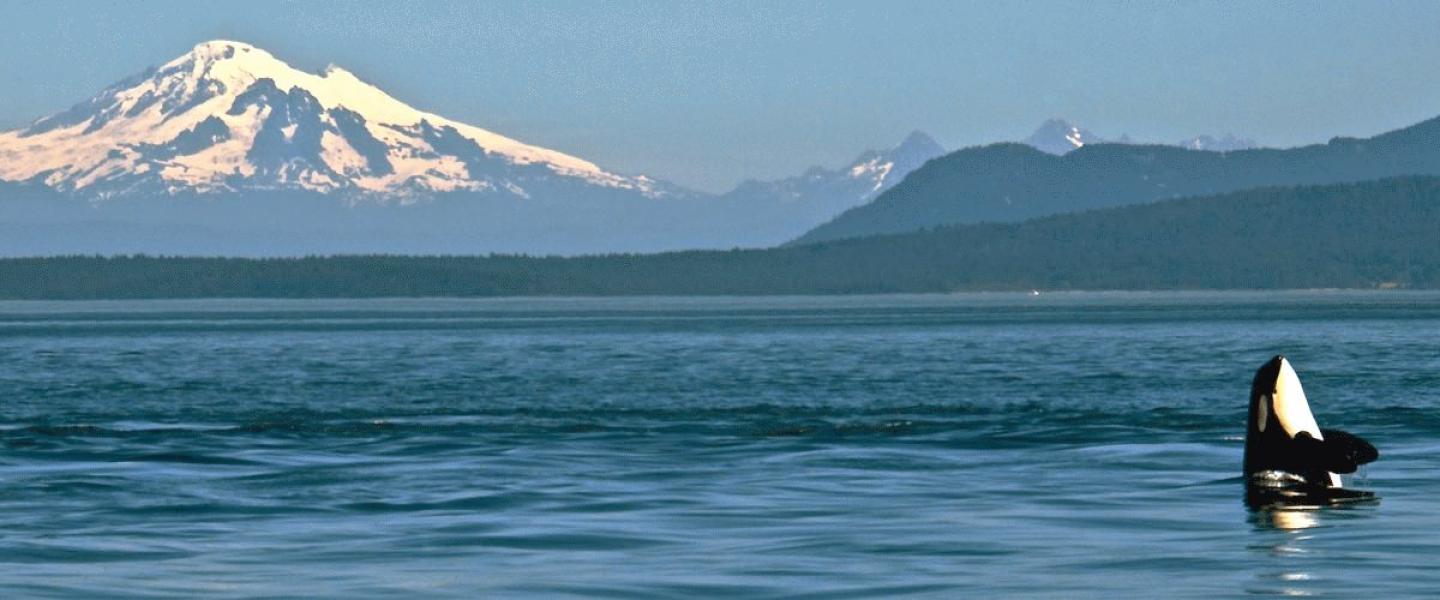
But they’re wearing their teeth flat on the abrasive skin of the sleeper shark, study says
By Larry Pynn, Vancouver SunJanuary 17, 2011 Scientists know little about the offshore killer whales, identified off the coast in 1989, due to their nomadic movements.Photograph by: Brian Gisborne, handout
A mysterious population of offshore killer whales in B.C. are specialists at killing sharks — to the detriment of their teeth — marine scientists have discovered in a landmark study.
Scientists have long known that resident killer whales depend on fish, especially salmon, and that transient killer whales exist on marine mammals such as seals and sea lions.
But the diet of offshore killer whales — first identified on the B.C. coast in 1989 — has remained largely a mystery due to their wide-ranging and distant movements.
This latest study, newly published in the journal Aquatic Biology, proves through DNA evidence that offshore killer whales prey on large Pacific sleeper sharks — whose skin is so abrasive it is believed to be wearing the whales’ teeth flat.
“It’s exciting, it’s been a detective hunt for so long,” said John Ford, lead author of the study and senior research scientist with the federal Pacific Biological Station in Nanaimo. “For so many years we’ve been pondering on what these offshore killer whales feed on.”
Other potential prey of offshore killer whales includes salmon shark, blue shark and spiny dogfish, as well as related elasmobranch species such as skates and rays. They may also consume fish such as halibut, meaning their diet could overlap with that of resident killer whales.
The study documents how offshore killer whales preyed on at least 16 Pacific sleeper sharks on two occasions: at B.C.’s Learmonth Bank, in western Dixon Entrance, in May 2008; and Montague Strait in Alaska’s Prince William Sound, in June 2009.
DNA tests of prey tissue extracted from the surface at the kill sites revealed Pacific sleeper sharks (Somniosus pacificus) to be the prey species.
“This represents the first confirmed prey species of offshore killer whales based on field observations of foraging and the first record” of Pacific sleeper sharks as the prey of killer whales anywhere, the study said.
Researchers speculate that the whales might be targeting the large, rich livers of the sharks, since in one of the attacks it would have been unlikely for the whales to consume all their prey. The liver of a four-metre Pacific sleeper shark can weigh about 180 kilograms, or one-fifth its body mass.
Co-authors are Graeme Ellis and Michael Wetklo of the Pacific Biological Station, Lance Barrett-Lennard of the Vancouver Aquarium, and Craig Matkin of the Alaska’s North Gulf Oceanic Society.
Almost 300 offshore killer whales have been identified off the B.C. coast, living on the continental shelf or beyond but also on occasion known to visit inside waters. They are thought to swim between Southern California and Alaska’s eastern Aleutian Islands, and have not been observed in contact with resident or transient killer whales.
There are about 275 transient whales and 340 resident whales (in two populations) off the B.C. coast.
In Canada, southern resident killer whales are endangered while northern residents and transients are threatened — a listing recently applied to offshore killer whales, as well.
Offshore killer whales can travel in groups of 50 or more and, like residents, have a wide variety of vocalizations. Transients travel silently to avoid alerting their marine mammal prey.
Offshore killer whales tend to be smaller and feature more evenly rounded dorsal fins.
Ford said it’s remarkable that three distinct groups of killer whales exist off the B.C. coast eating different prey.
Scientists who started studying killer whales decades ago never would have predicted “that there could be different populations that are specialized and living separate lives in the same waters here,” he said.
Researchers know about the worn teeth of offshore killer whales from fewer than 10 samples, including a couple of carcasses from Alaska as recently as 1994.
In this latest study, researchers conducted DNA tests on old killer whale skulls exhibiting worn teeth, including one from a mass stranding off Estevan Point on the west coast of Vancouver Island in the 1940s and one from a whaling station at Coal Harbour on northern Vancouver Island in the 1950s, to confirm both were offshore killer whales.
Ford said the teeth appear to be worn down even among teenage offshore killer whales, a situation not seen even in older transient and resident killer whales. “Nothing flat to the gums like this, with open exposed pulp cavities. Is this a source of infection? Food crammed into those pulp cavities can’t be a good thing.”
Teeth can become so worn that individual killer whales may have to rely on others in their pod to kill the shark so they can share in the food. Young whales with sharp teeth might help out.
“How extreme tooth wear may affect a whale’s ability to catch and consume prey is unknown,” the report says. “However, if tooth wear is debilitating, food sharing and provisioning ... may be of particular importance within groups of offshore killer whales.”
Despite their abrasive skin, Pacific sleeper sharks tend to be softer-bodied animals, which might make them easier to kill and open up. “They may rupture them by ramming them with their noses and then tear them up, even with compromised teeth,” Ford said.
The dark-grey Pacific sleeper shark is found in temperate waters, grows beyond four metres, and feeds on a range of prey including fish, squid, octopus, crabs and carrion.
The shark is occasionally caught as bycatch in commercial longline and deep-trawl fisheries, including for halibut. The International Union for Conservation of Nature does not provide a conservation status for the shark due to insufficient data.